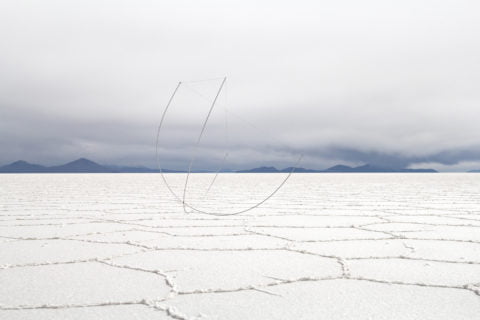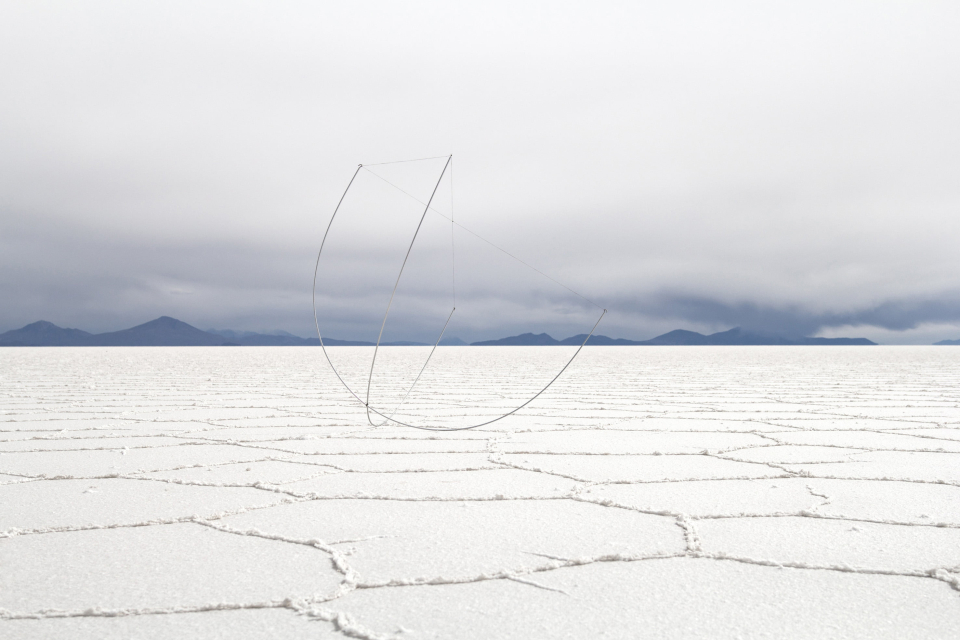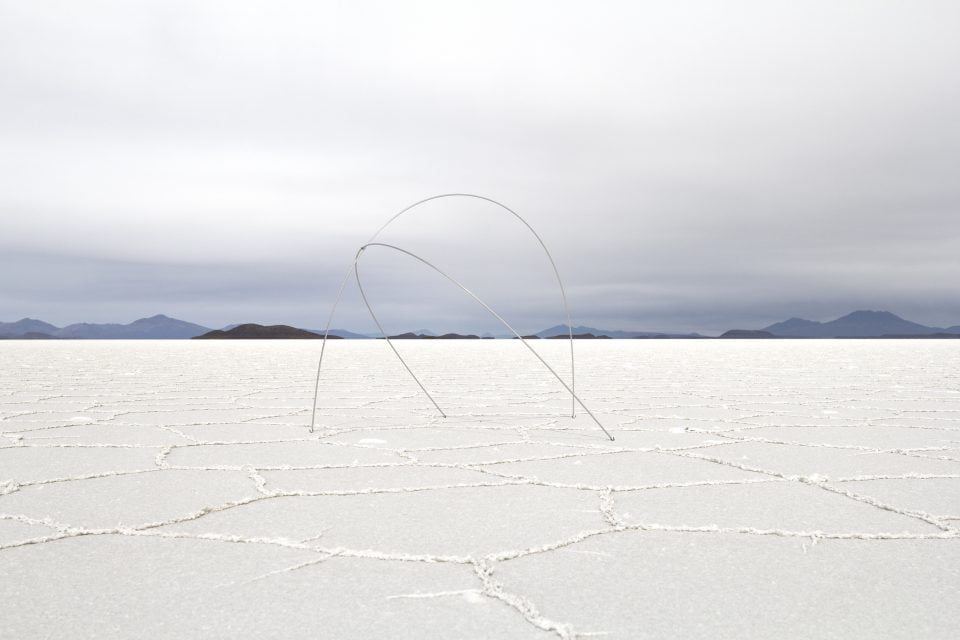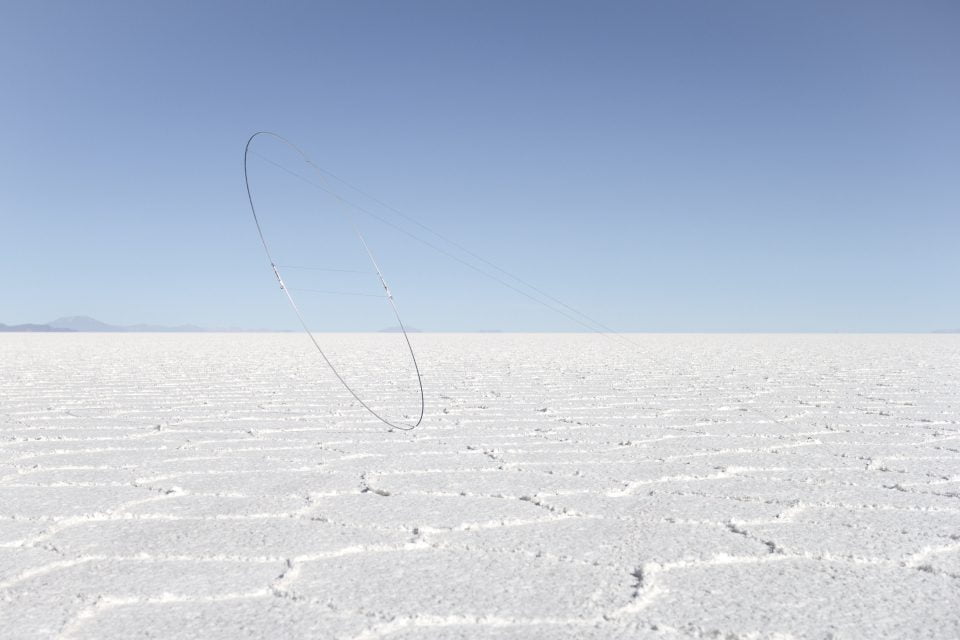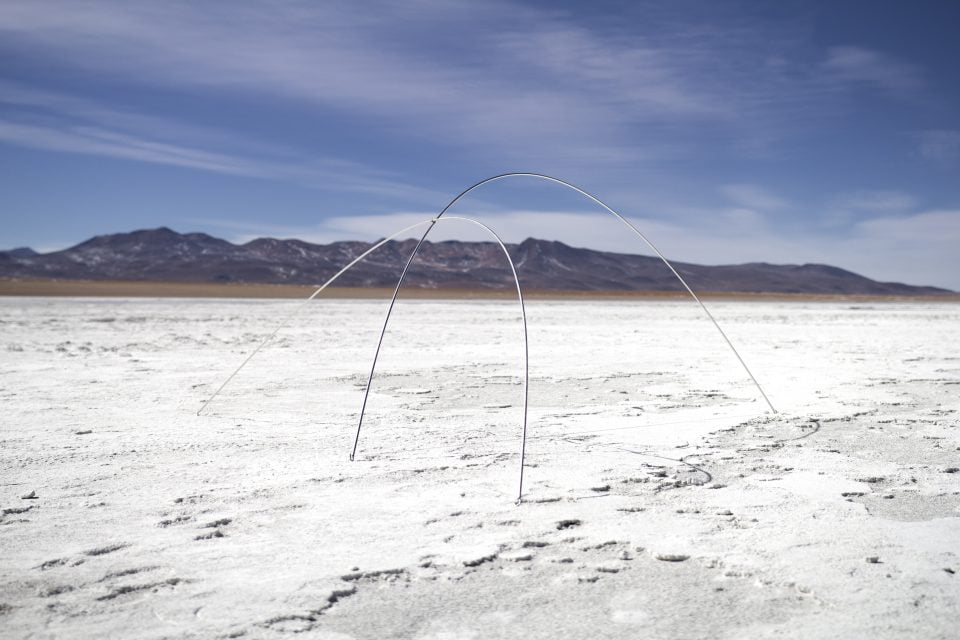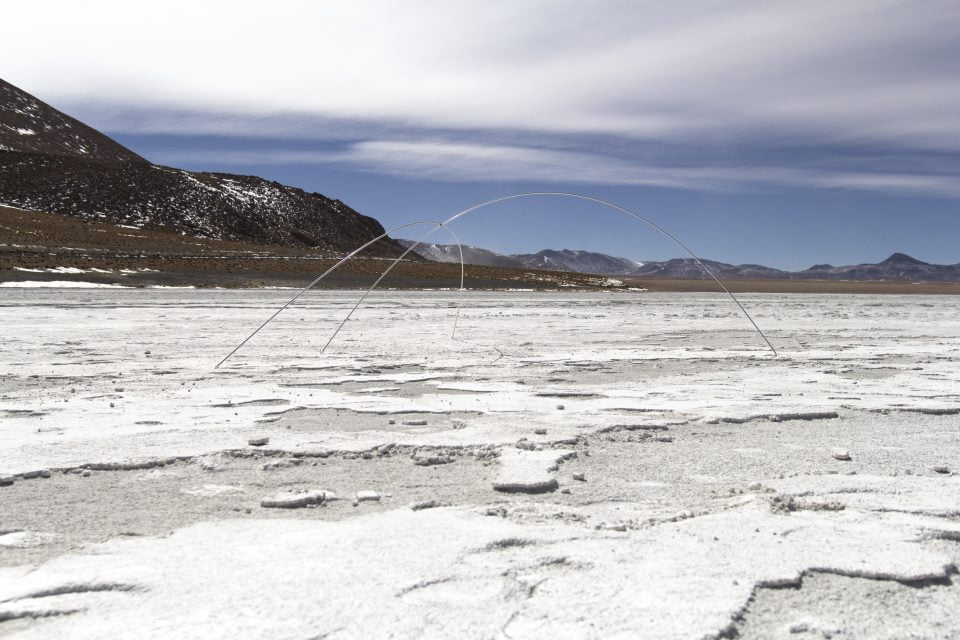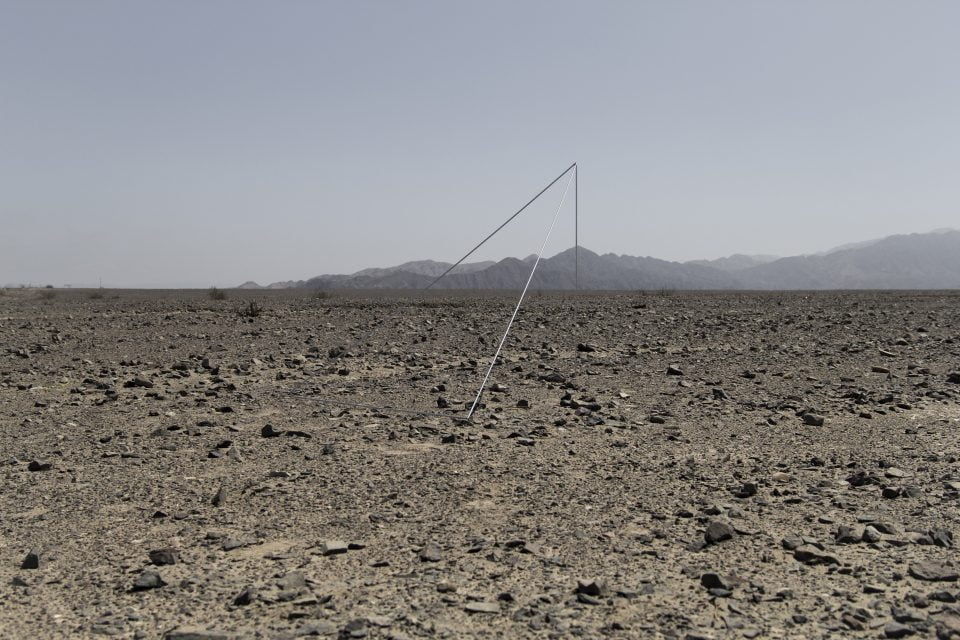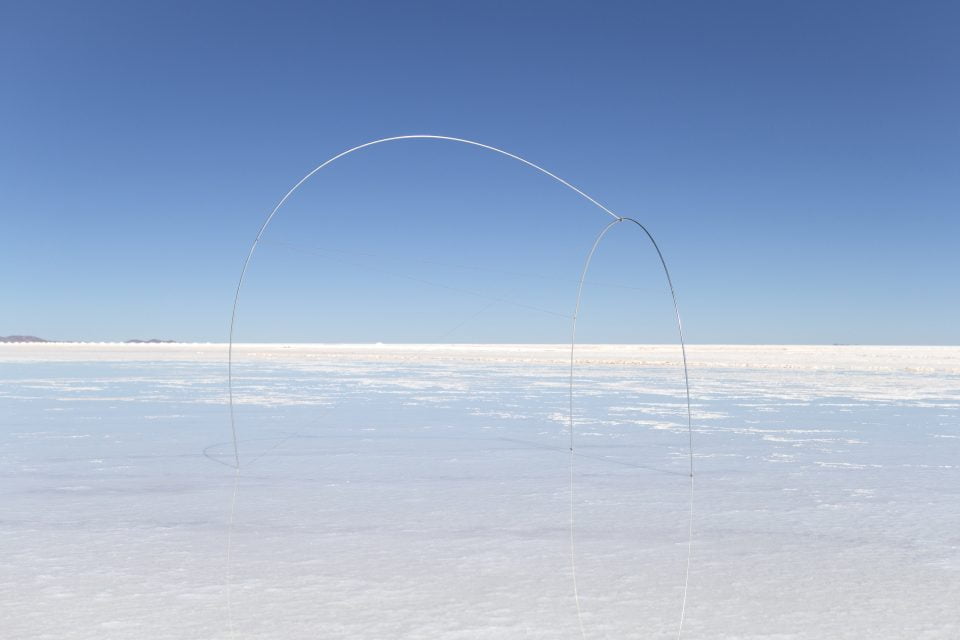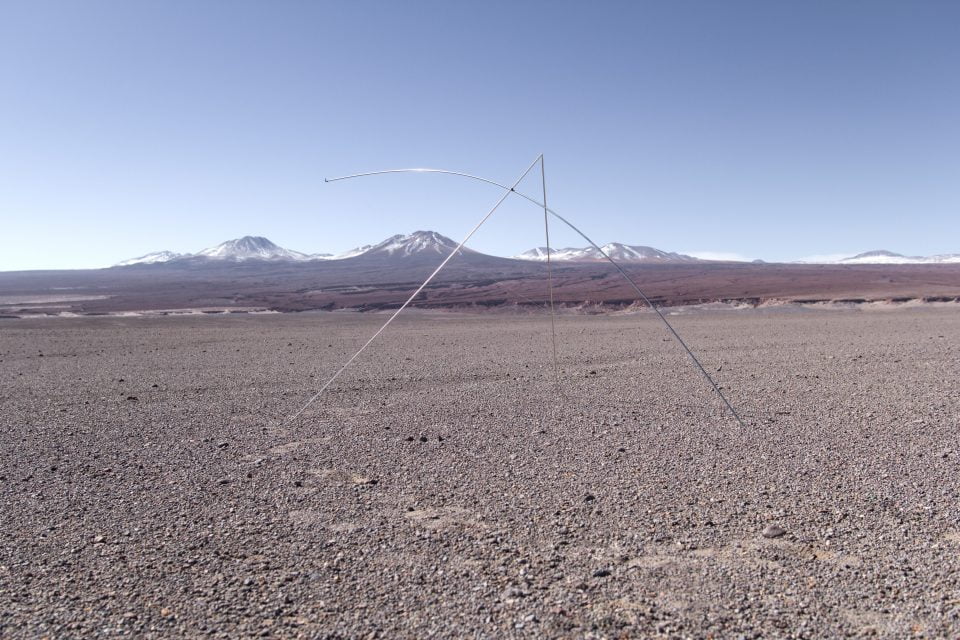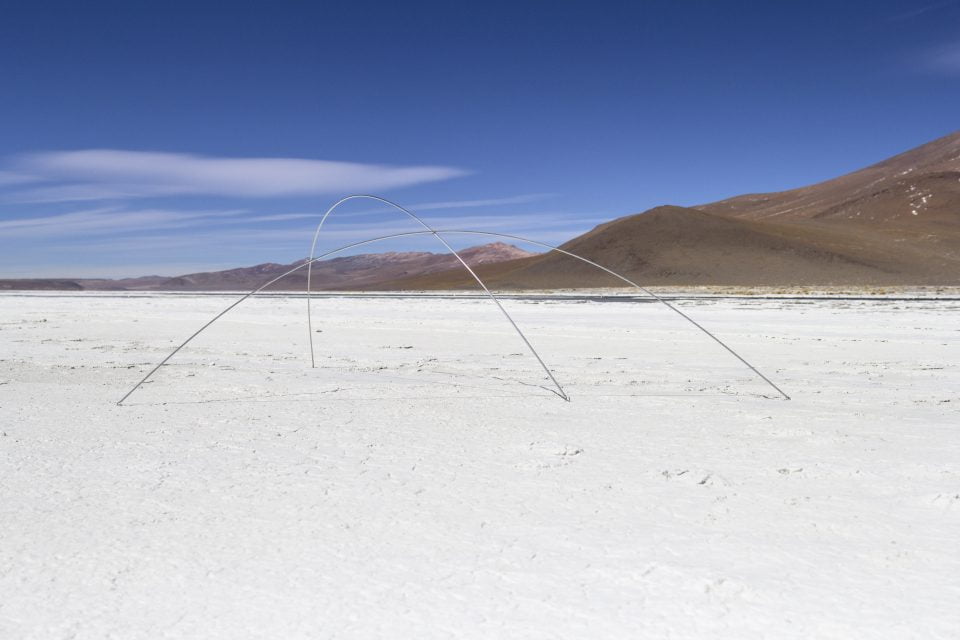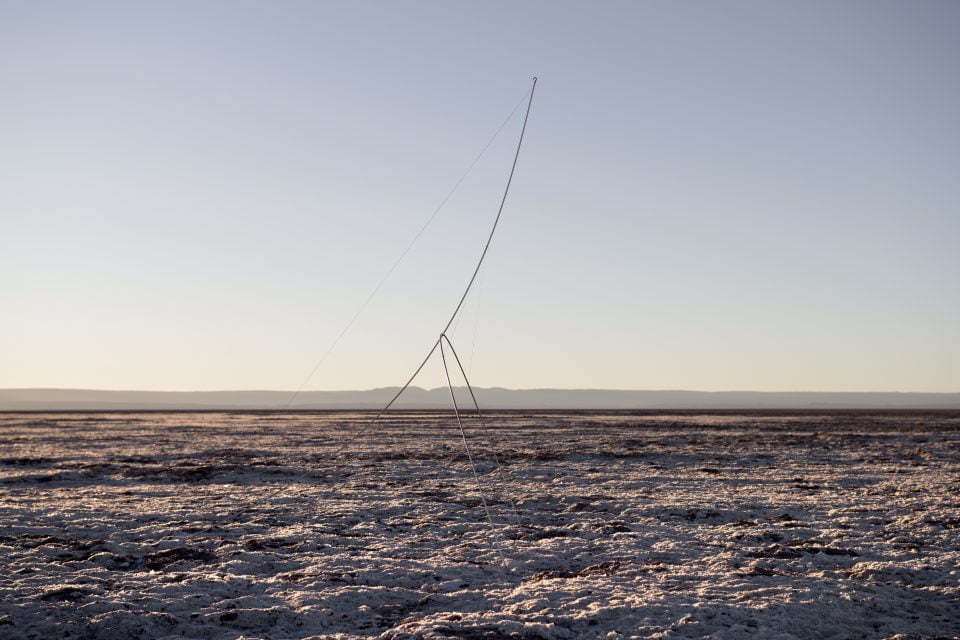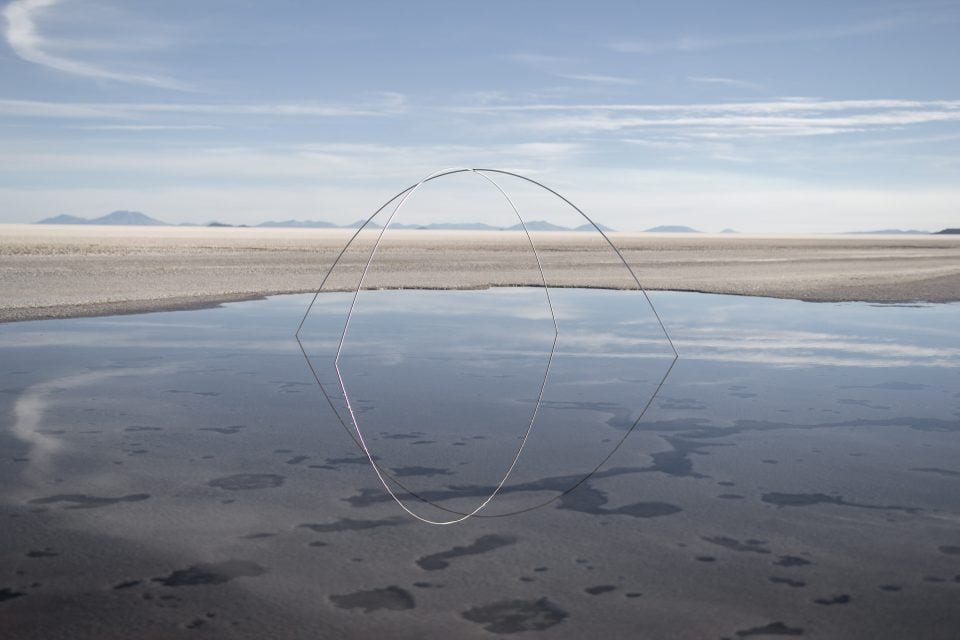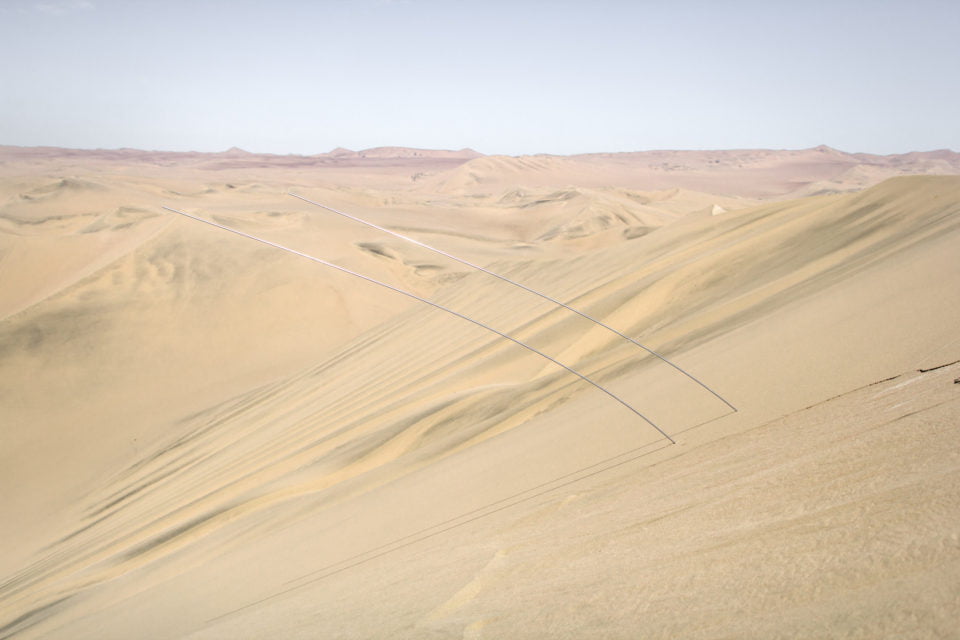Skeletons
The Skeletons are spatial structures made of an aluminum tent frame stretched with string, which the author used during his trip through South America in 2016. The project concept is based on the possibilities of versatile use of what fits in the backpack. The tent was one of the most important pieces of equipment, and its frame had all the features to show the potential of the sculptural possibilities.
Tent poles consist of short tubes through which an elastic cord is threaded, which allows for quick unfolding and folding of the structure. Hook-shaped tent pins placed at the ends of the poles allow you to tighten the string stretched between them. This ritual act of unfolding and folding the tent made the author realize that the properties of the frame provide almost unlimited construction possibilities. The spatial arrangement made of an aluminum tent frame served for a short time as a sculptural installation open to the landscape, transparent and almost invisible. The relationship between form and landscape changed depending on the point of view. The shapes of the lines cut the space, marked important planes of emptiness, disturbed the sense of distance and created a delicate yet precise drawing in the radically harsh landscape of the Bolivian salt deserts, the Chilean Atacama and the Peruvian Nazca plateau.
